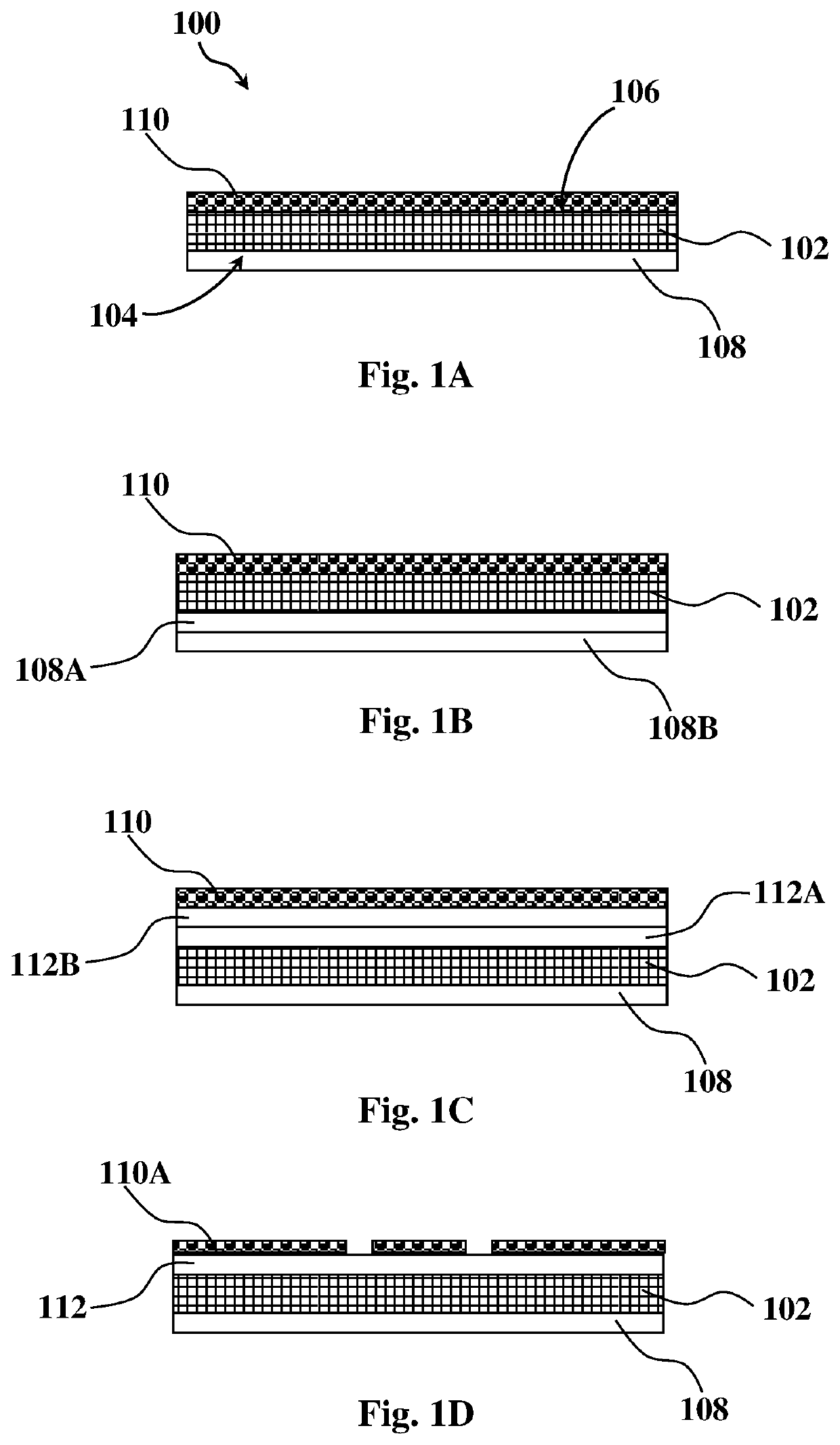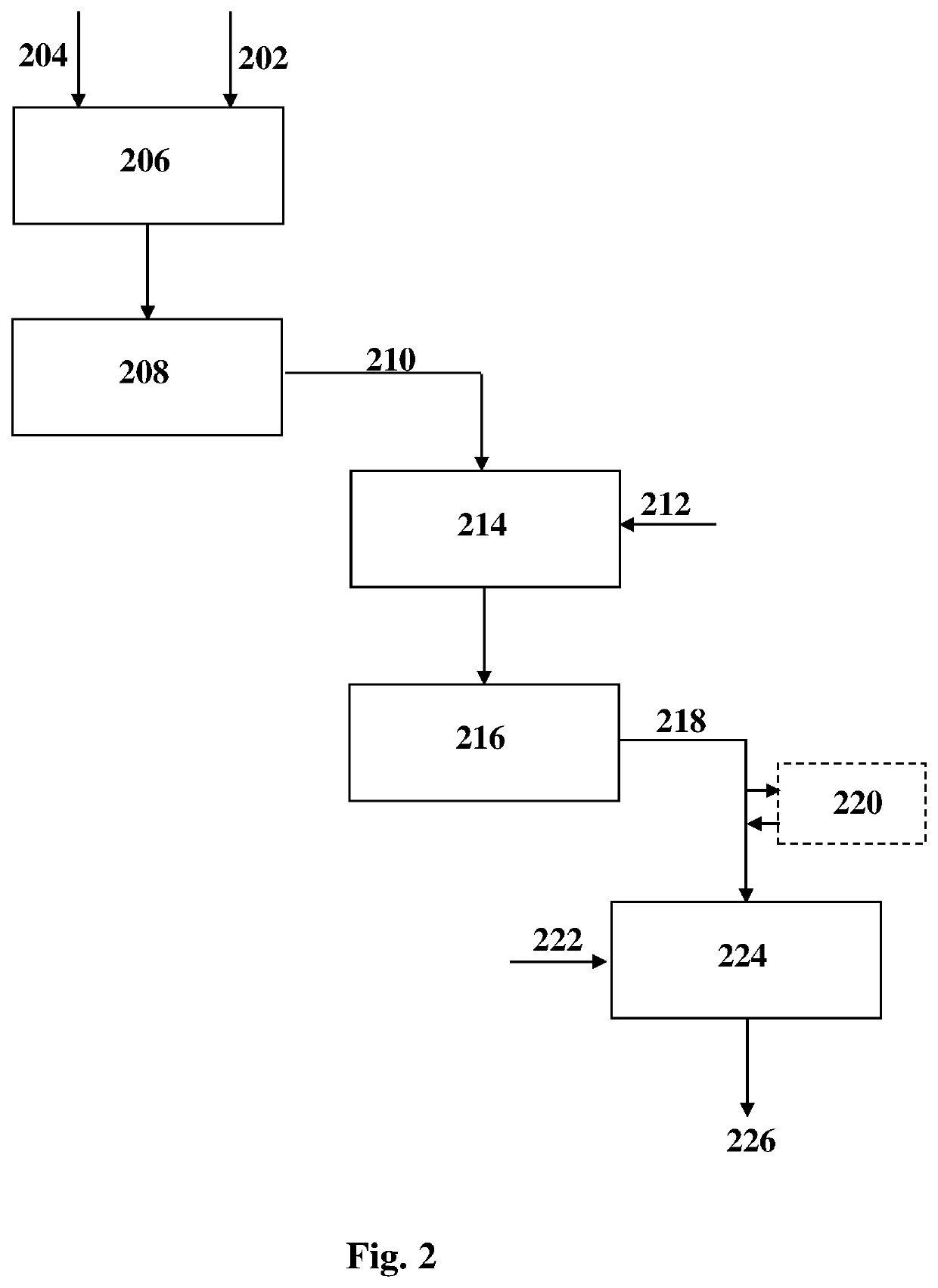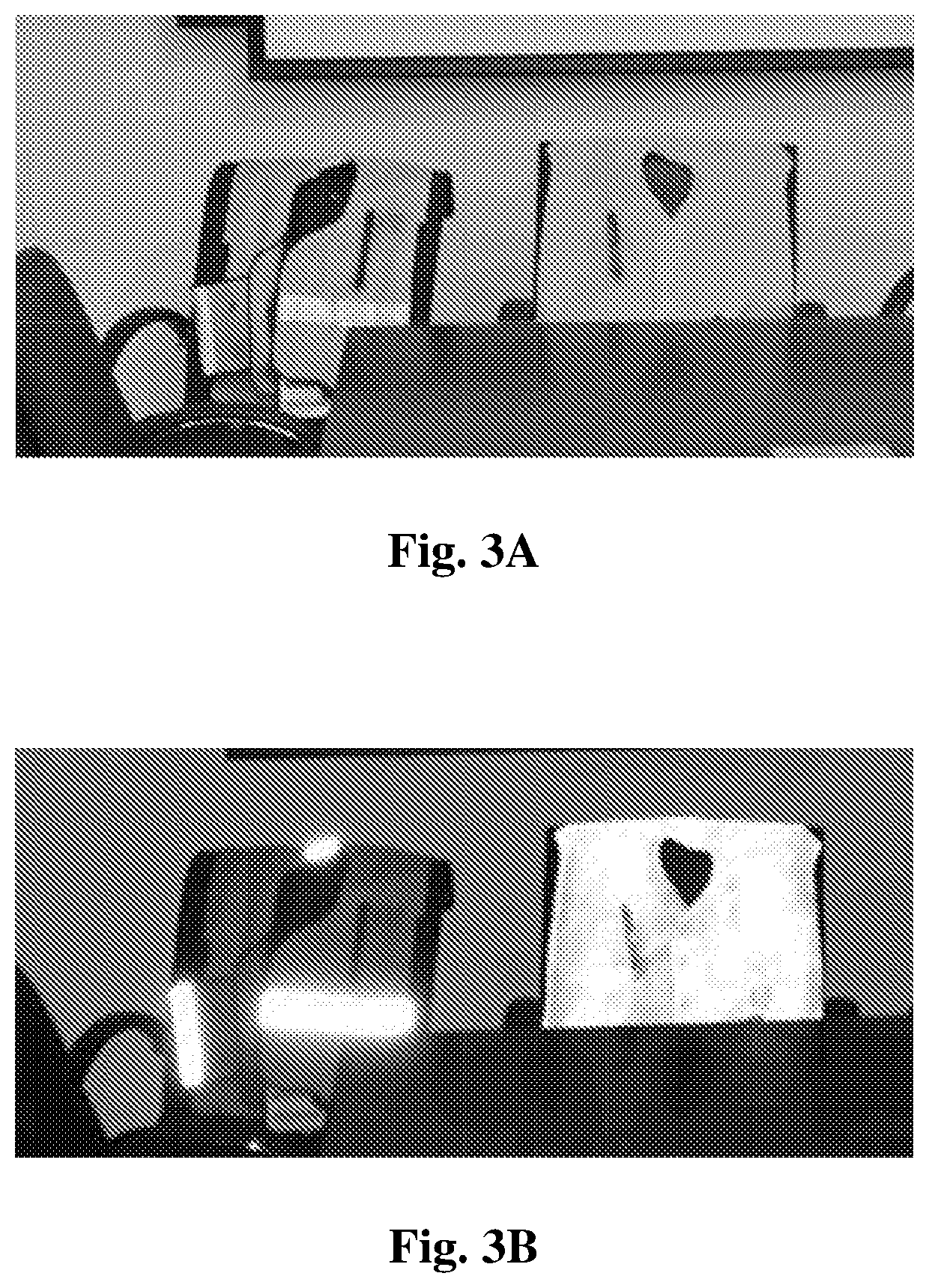Retroreflecting fabrics
a technology of retroreflective fabrics and fabrics, applied in textiles and paper, protective garments, instruments, etc., can solve the problems of limited reflectance, difficult application of retroreflective paints, and limited flexibility of the layers of such paints
- Summary
- Abstract
- Description
- Claims
- Application Information
AI Technical Summary
Benefits of technology
Problems solved by technology
Method used
Image
Examples
example
[0169]An exemplary manufacturing process of a retroreflecting fabric suitable for preparing inflatable products (such as life-vests, life-rafts, inflatable boats, etc.) will now be described. It is to be understood that the example is provided in a non-limiting fashion. Similar processes within the scope of the present disclosure may be provided for the manufacturing of different types of retroreflecting fabrics with different functional layers (providing that the top-most layer is a retroreflective layer).
[0170]A first paste comprising 25 wt % polyurethane resin, 50 wt % methylethylketone (MEK) and 25 wt % dimethylformamide (DMF) was prepared by dissolving the polyurethane during mixing for at least 48 hours to afford complete dissolution. Prior to application onto the fabric, app. 2 wt % of an aromatic diisocyanate was added.
[0171]The first paste was applied by a knife-on-air or a knife-on-roll pasting method onto the bottom surface of a nylon fabric having an areal density of app...
PUM
| Property | Measurement | Unit |
|---|---|---|
| thickness | aaaaa | aaaaa |
| thickness | aaaaa | aaaaa |
| thickness | aaaaa | aaaaa |
Abstract
Description
Claims
Application Information
 Login to View More
Login to View More - R&D
- Intellectual Property
- Life Sciences
- Materials
- Tech Scout
- Unparalleled Data Quality
- Higher Quality Content
- 60% Fewer Hallucinations
Browse by: Latest US Patents, China's latest patents, Technical Efficacy Thesaurus, Application Domain, Technology Topic, Popular Technical Reports.
© 2025 PatSnap. All rights reserved.Legal|Privacy policy|Modern Slavery Act Transparency Statement|Sitemap|About US| Contact US: help@patsnap.com



